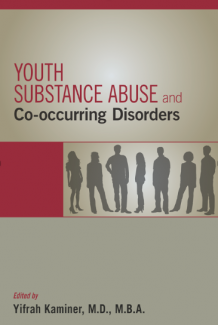Youth Substance Abuse and Co-Occurring Disorders

70%–80% of adolescents with a substance use disorder also manifest comorbid psychopathology, known also as co-occurring disorders or dual diagnosis. Co-occurring disorders are the presence of one or more comorbid psychiatric disorders in addition to a substance use disorder.
These comorbidities can greatly complicate assessment and treatment, and this book provides clinicians with not only the theory behind the various approaches to substance use disorder but also the practical knowledge that is essential to understand and treat psychiatric comorbidity in these adolescents.
Some of the most prominent investigators in the field have contributed scholarly chapters to the volume, which offers a multitude of useful features:
- An extensive examination of the cause of a substance use disorder, focusing on whether psychopathology may precede a substance use disorder, as in the majority of cases, develop as a consequence of preexisting a substance use disorder, or originate from a common vulnerability;
- Consistent emphasis on future directions in clinical research and treatment advancement, which helps the reader identify critical gaps in understanding the relationship between a substance use disorder and psychiatric comorbidity among youth
- Thorough, state-of-the-art chapters on the developmental pathways and relationships between substance use and co-occurring psychiatric disorders, screening tools and interventions, and the full range of co-occurring disorders make the book ideal for instructional use
- Information on risk factors for the development of a substance use disorder in adolescence, including psychiatric disorders in childhood such as disruptive behaviour disorders, mood, anxiety disorders, etc.
Clinically useful and scientifically rigorous, Youth Substance Abuse and Co-occurring Disorders should stimulate further discussion and advancement of the field, ultimately resulting in improved and more effective services and intervention modalities for these youth.
